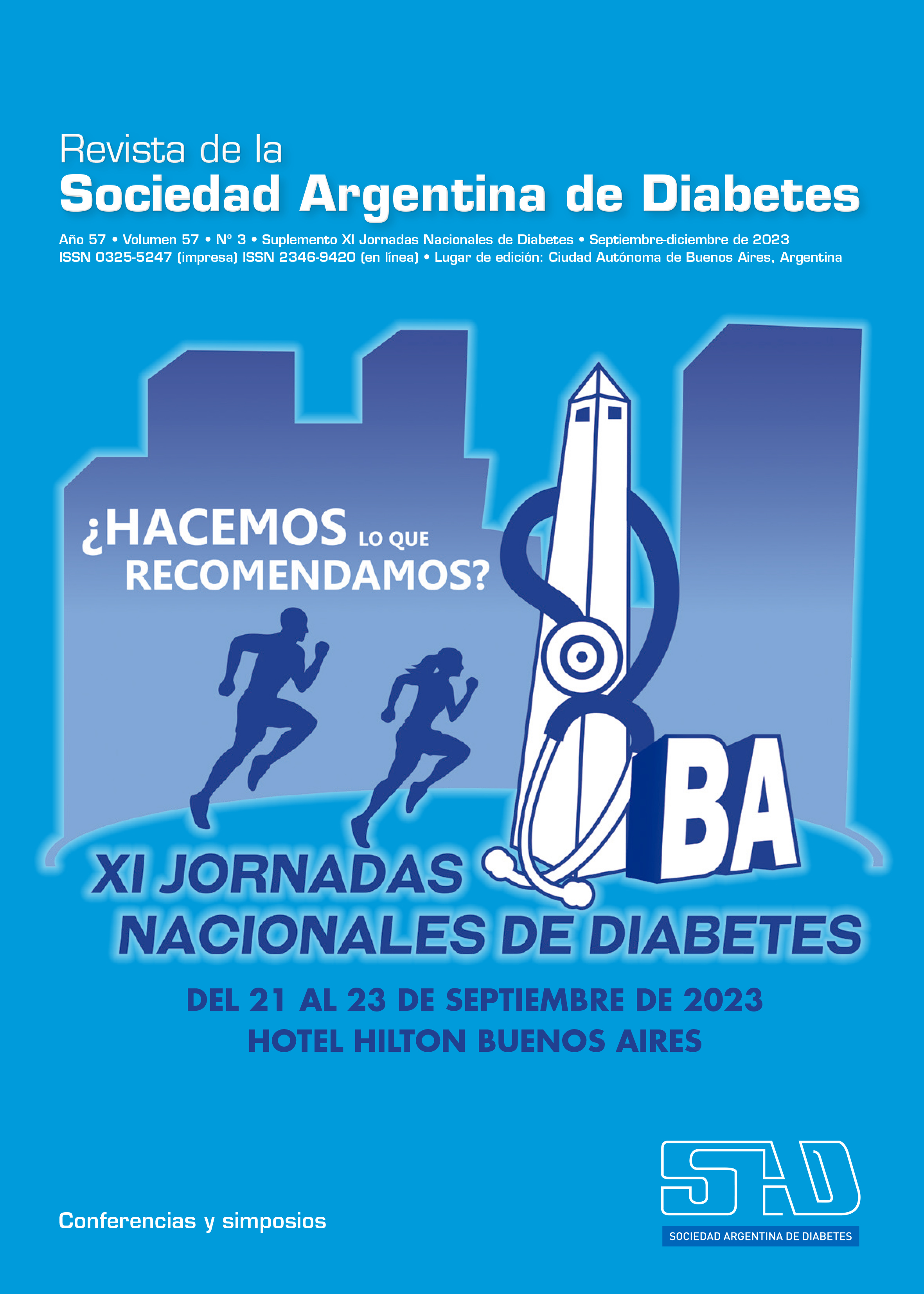Phenotypes of polycystic ovary syndrome and their association with gestational diabetes
DOI:
https://doi.org/10.47196/diab.v57i3Sup.702Keywords:
polycystic ovary, gestational diabetesAbstract
Introduction: polycystic ovary syndrome (PCOS), the most common gynecological endocrinopathy in women of reproductive age, is characterized by hyperandrogenism (H), chronic oligo-anovulation (O), and/or polycystic ovaries (P). Although its etiology is unknown, insulin resistance (IR) is considered the main determinant of the syndrome. In women with PCOS and IR, pregnancy exacerbates pre-existing IR, predisposing them to a higher risk of obstetric and neonatal complications. However, the main limitation of published studies is the lack of inclusion of the new PCOS phenotypes and the different diagnostic criteria to define gestational diabetes (GD). The diagnosis of PCOS phenotypes (Rotterdam Consensus) requires the presence of 2 out of 3 characteristics: Phenotype A: H+O+P, Phenotype B: H+O, Phenotype C: H+P, and Phenotype D: O+P. As there are no studies evaluating the effects of the association between PCOS and pregnancy according to the different phenotypes, it would be premature to assume a priori that all of them present the same risk of developing complications.
Objectives: to analyze the preconceptional endocrine and metabolic clinical characteristics of PCOS phenotypes and their association with the diagnosis of GD.
Materials and methods: design: Case-control study. We studied 183 primigravid women aged 18-35 years with singleton spontaneous pregnancies, divided into two groups: PCOS (n=87): Phenotype A=53; B=9; C=16; D=9, and Control (without H, O, or P) n=96. We analyzed preconceptional characteristics (age, anthropometry, oral glucose tolerance test, insulin levels, lipids, androgens, gonadotropins) and during gestation: weight gain, blood pressure, oral glucose tolerance test, as well as obstetric-neonatal characteristics.
Preliminary results: obstetric and neonatal complications (GD, hypertension, prematurity, and extreme birthweights) were significantly higher in the PCOS Group compared to the Control (86 vs. 32%, p=0.007), despite no differences in age, BMI, or weight gain. Phenotype A showed the highest occurrence of early miscarriages, GD, and pregnancy-induced hypertension (RR 5.8, 3.6, and 1.9, respectively), as well as a higher percentage of first-degree relatives with diabetes and hypertension. Preconceptional androgen status, oral glucose tolerance test, insulin levels, Triglycerides/HDL, and waist circumference positively correlated, while SHBG negatively correlated with obstetric and perinatal complications (p <0.05).
Conclusions: in our population, Phenotype A of PCOS stands out for presenting a higher risk of developing GD. The limited number of patients in the other phenotypes does not yet allow for statistically valid conclusions.
References
-
Downloads
Published
Issue
Section
License
Copyright (c) 2023 on behalf of the authors. Reproduction rights: Argentine Diabetes Society

This work is licensed under a Creative Commons Attribution-NonCommercial-NoDerivatives 4.0 International License.
Dirección Nacional de Derecho de Autor, Exp. N° 5.333.129. Instituto Nacional de la Propiedad Industrial, Marca «Revista de la Sociedad Argentina de Diabetes - Asociación Civil» N° de concesión 2.605.405 y N° de disposición 1.404/13.
La Revista de la SAD está licenciada bajo Licencia Creative Commons Atribución – No Comercial – Sin Obra Derivada 4.0 Internacional.
Por otra parte, la Revista SAD permite que los autores mantengan los derechos de autor sin restricciones.



















